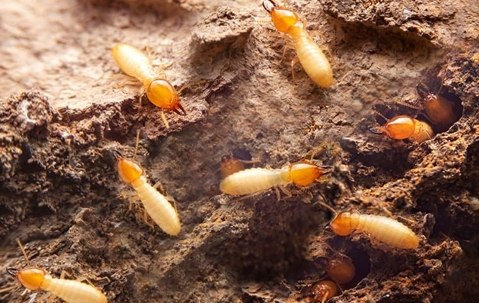In the picturesque Bay Area, where natural beauty abounds, it's vital to safeguard your home against potential threats. Termites are a silent menace you might not see but can cause extensive damage.
In this detailed guide, we'll provide expert advice on how to prevent termite infestations and recognize their signs, understand termite damage, and know when it's time to call in professional termite control services. For termite control in the Bay Area, trust Bay Pest to help you get rid of these pests for good.
You're Not Likely To See A Termite: How To Identify Signs Of Activity
Termites are experts at staying out of sight, but you can detect their presence by looking for subtle indicators. Here's how you can identify signs of termite activity:
- Mud tubes
- Seeing termite swarmers around your property
- Hollow-sounding wood
- Discarded wings
- Frass or termite droppings
- Damaged or sagging wood
- Tunnels and galleries
- Hard-to-reach areas
Termite identification doesn't have to be difficult. If you suspect termite activity, it's advisable to contact a professional pest control service for a thorough inspection and appropriate termite treatments.
The Silent Threat: Understanding Termite Damage
Termites are often referred to as the "silent destroyers" because they can cause extensive damage to your home without you even realizing it until the structural integrity is compromised. Understanding termite damage is crucial for homeowners in the Bay Area.
Structural Impact:
- Wooden Structures: Termites primarily feed on cellulose, a key component of wood. As they consume the wooden structures in your home, they weaken them from the inside; this can lead to sagging floors, damaged support beams, and even the collapse of structures in severe cases.
- Costly Repairs: Repairing termite-damaged structural components can be expensive. It often involves replacing damaged wood, which may also require additional work to ensure the infestation does not recur.
Carpets and Furniture:
- Carpets: Termites can also infest carpets. They are attracted to the natural fibers in carpets, and you might notice small holes or uneven surfaces due to their feeding activity.
- Furniture: Wooden furniture is another target for termites. Chairs, tables, and cabinets can become infested, leading to the weakening of the furniture and potential structural damage.
Paper Products:
- Books and Documents: Termites seek cellulose-rich materials, including paper products. Books, documents, and cardboard boxes can become food sources for termites, leading to significant losses.
- Preventative Measures: Storing valuable papers in termite-resistant containers or away from potential infestation areas is essential to protect them.
Secondary Damage:
- Mold and Fungus: Termite damage can create entry points for moisture, which can lead to the growth of mold and fungus. This additional issue can impact indoor air quality and pose health risks.
- Safety Hazards: Weakened structural components can be a safety hazard. If termites damage load-bearing elements, it can put the safety of inhabitants at risk.
Preventative Measures:
- Regular Inspections: Regular termite inspections are essential to catch infestations in their early stages and prevent extensive damage.
- Moisture Control: Addressing moisture issues in your home, such as leaky pipes or inadequate ventilation, can help make your property less attractive to termites.
- Wood Treatment: Pre-treating wooden structures with termite-resistant products during construction or renovations is a proactive measure.
Termite control, which includes regular inspections, proper maintenance, and prompt action in the event of an infestation, is key to protecting your home from these silent but destructive pests.
Understanding The Termite Threat: Why Termites Infest Homes
Let's provide a more concise overview of why termites infest homes in the Bay Area:
- Diet and Wood: Termites gravitate to homes due to their cellulose-rich diet, which includes wood, paper, and cardboard.
- Moisture: Termites require moisture, making damp areas and water damage attractive to them.
- Bay Area Climate: The moderate, consistent climate in the Bay Area provides favorable conditions for termite activity.
- Wooden Structures: Termites target wooden components in homes, including attics and crawl spaces.
- Landscaping: Lush vegetation and proximity to trees can increase the risk of infestations.
- Untreated Wood: Homes with untreated wood are more susceptible to termite infestations.
- Entry Points: Termites enter through cracks and openings in foundations, walls, and roofs.
- Previous Infestations: Residual pheromones from prior infestations can attract new colonies.
Preventative measures, such as regular termite inspections and moisture control, are crucial to minimize the risk of infestations in the Bay Area.
Professional Termite Control: Know When To Call In The Experts
In conclusion, knowing when to call in professional termite control experts is essential for safeguarding your home. Regular inspections, early detection, and timely action are key to preventing extensive termite damage in the Bay Area. Call our team at Bay Pest for assistance with termite removal today!

